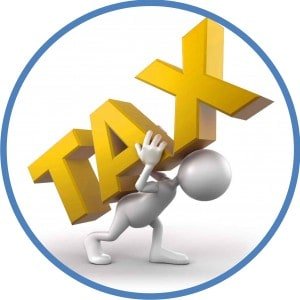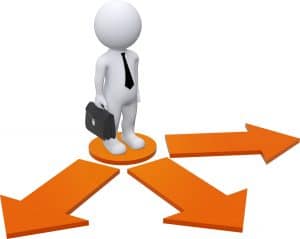Can You File Bankruptcy Twice? It Depends
For honest debtors in difficult financial straits, bankruptcy offers a fresh start. This clean financial slate includes a discharge of many of your debts and the halting of collection efforts. In some cases, a single bankruptcy might not solve all of your financial woes or prevent the onset of new challenges.
But can you file bankruptcy twice?
As you’ll see below, most unsecured debts disappear in bankruptcy. Over time, the clean slate opens the door to renewed offers from credit card companies and other lenders for you to borrow money.
In particular, the passage of time and the opportunities to rebuild credit may encourage you to open new accounts. With the new debt, though, comes the risk that an unforeseen job loss, sickness, or urgent home or vehicle repairs will dwindle your resources.
If you are not careful, you might see debt mounting to the point that you cannot repay or control it. When a second filing becomes necessary, the question arises whether you’re permitted to do it.
Generally, bankruptcy law does not prohibit repeat bankruptcy filings.
However, refiling might not bring you the benefits afforded by the bankruptcy law. Whether it does, depends on the previous bankruptcy case you filed, when you filed it, and how the original case ended.
A Primer On The Benefits Of Bankruptcy

The Discharge
The main power of bankruptcy lies in the discharge of a filer’s debts. Upon completion of your bankruptcy case, you no longer stand responsible for most of your debts. That is the case even if the creditor is left not fully paid or even paid at all.
Generally, a discharge eliminates your responsibility to unsecured creditors. Holders of unsecured claims do not have a lien or interest in your property to which your debt attaches. Even with secured debts such as a mortgage or car loan, you no longer have personal liability.
However, the security interest or other lien survives bankruptcy. If your financial situation deteriorates, your home might face foreclosure even if you otherwise cannot be held responsible for paying any difference between the amount of debt and the collateral value.
The discharge also brings a stay against future collection efforts by unsecured creditors. You can use the discharge as a defense against subsequent lawsuits. Creditors who send collection letters, demands, or sue on discharged debts might face the court’s sanctions.
Debts That Are Not Discharged By Bankruptcy

- Federally-backed student loans
- Domestic support obligations, such as alimony and child support
- Debts that arise from embezzlement and acts of fraud, such as misrepresenting your income, financial condition, or other important facts on an application for a credit card, mortgage, or other personal loans
- Certain taxes, but you may have income taxes discharged in a Chapter 7 case (see more on Chapter 7 below)
- Amounts assessed by criminal restitution orders
- Government fines or penalties
- Debts covered by a reaffirmation agreement that is approved by the Bankruptcy Court
Creditors of most non-dischargeable debts do not need to take any action to preserve such a status. However, debts that come from fraud or embezzlement do not automatically become dischargeable.
Such creditors must file a lawsuit in the bankruptcy case, known as an adversary proceeding, to get a ruling by the court that the debt is discharged. These types of actions come with filing deadlines.
The Automatic Stay
In most bankruptcy cases, the court will impose an automatic stop to any collection efforts when you file for bankruptcy.
Unless lifted by the court, your creditors cannot do any of the following during the bankruptcy proceeding:
- Start or continue a lawsuit
- Attempt to foreclose, garnish wages or seize your property
- Obtain, record, or otherwise perfect any mortgage, security interest, or other liens
- Demand in any form, including in writing or by phone that you pay on a debt
- Threaten to file a lawsuit or take any other action if you do not pay the debt
Creditors who disobey the automatic or other stay orders face significant sanctions from the court. If you believe a creditor has violated the stay, contact your experienced bankruptcy attorney promptly to get the creditor to cease the offending actions or file a motion for sanctions.
Note that the automatic stay affects only those creditors you have listed on your bankruptcy papers or who have been given a notice that you filed for bankruptcy.
That makes it essential for you to tell your bankruptcy lawyer and the court all parties who have claims against you. Neither the automatic stay nor discharge applies to any creditor you failed to identify on your papers and who did not notice your filing.
The Types Of Bankruptcies

The complication in multiple bankruptcy filings lies in the waiting period before the second or subsequent filing results in discharge. The period depends upon what kind of bankruptcy you first filed.
As such, an understanding of the two types of consumer bankruptcy: Chapter 7 and Chapter 13, is in order.
Chapter 7 Bankruptcy
If you filed a previous Chapter 7 Bankruptcy, you likely did so because you could protect all of your assets from being used to pay unsecured creditors.
This is because a Chapter 7 case involves a liquidation, at least theoretically, of your non-exempt assets.
A Chapter 7 trustee collects and sells that property that you cannot protect and applies it toward paying your unsecured creditors. For most filers, the bankruptcy law determines what property you can exempt from use to pay your unsecured debts.
If you live in a state like North Carolina, that state law will set your exemptions’ type and extent.
By way of illustration, common exemptions for debts include those for:
- Your equity in your principal home, up to a certain value
- Your equity in a motor vehicle, up to a certain value
- Individual Retirement Accounts
- Household and personal items, such as appliances, home electronics, clothes, furniture, and yard tools
- Jewelry
- Proceeds from personal injury suits or settlements
If you could exempt all of your property, you would likely be an excellent candidate to file Chapter 7. In such a case, you obtained a discharge of most of your debts without having any of your property sold to pay toward any of those debts.
The Chapter 7 approach may not be available in a second filing (or even a first). As you might have remembered during your original filing of Chapter 7, you had to satisfy a means test to qualify for Chapter 7.
Whether you’re eligible for a second case depends on whether you have enough disposable income to make payments in a Chapter 13 plan. The means test takes your gross (pre-tax) income, excluding Social Security payments and a few other selected income sources, and subtract it from certain deductions.
The items you can subtract are related to mortgage and car payments, household expenses, car maintenance expenses, taxes, and educational expenses, to name a few. Guidelines used by bankruptcy trustees preset some of these expenses based on Internal Revenue Standards and where you live.
Some debtors can satisfy the means test based solely on the fact that the gross income, based on the number of people in the household, falls below a median number for the debtors’ particular state.
Otherwise, the gross income less expenses cannot go above a certain level. If the disposable income sits north of your state figures, you will likely have to file a Chapter 13 to stay in bankruptcy.
Chapter 13 Bankruptcy

The other Consumer Bankruptcy lies in Chapter 13, which provides for a discharge of most debts after you have completed a repayment plan. If you have to file a second Chapter 13 Bankruptcy or had to do so the first time, it was likely because you either failed the means test, had more property than you could exempt, or were behind on your mortgage and foreclosure was imminent already in process.
In Chapter 13, you pay in monthly installments for three years or five years your disposable income to a trustee. If you are behind on your mortgage when you file Chapter 13, some of your monthly payments will go to cure the amount you are behind. If your current on the mortgage, you can continue to pay your lender directly.
Aside from the mortgage, most of the Chapter 13 plan payments go to pay your car payment, back taxes, credit card companies, personal loan lenders, and other unsecured creditors. The amount you have to pay per month usually depends upon your disposable monthly income.
You use the same data as you would in Chapter 7, except that Chapter 13 allows you to deduct your disposable income any repayments for retirement loans or amounts deducted from your paycheck for your retirement plan.
The Waiting Periods Between Bankruptcies

The type of consumer bankruptcy you file shapes how you get a discharge in the first case and how long you must wait after the first or previous case to file a second one and get a second discharge.
Specifically, and assuming you got a bankruptcy discharge in the first case, the time you must wait depends on your original filing date.
Waiting Period For Multiple Bankruptcies
- Chapter 7 followed by Chapter 7 -Eight years
- Chapter 13 followed by Chapter 13 – Two years
- Chapter 7 followed by Chapter 13 – Four years
- Chapter 13, followed by Chapter 7 – Six years, unless you paid your unsecured debts in full in the Chapter 13 case, or you paid at least 70 percent of the claims filed by your credits in the Chapter 13 case, and you entered into the Chapter 13 plan in good faith.
All of these time periods begin to run from the filing date of the first bankruptcy case. The interval of eight years does not apply if you did not get a discharge in the initial Chapter 7 case.
Why File Even If No Discharge In The Second?
The fact that a second bankruptcy is too soon for a second discharge does not necessarily mean filing for bankruptcy twice is useless to you. After the first bankruptcy, you might fall behind on payments or owe taxes you cannot repay.
By filing a subsequent Chapter 13, you obtain the benefit of the automatic stay. This prevents your mortgage holder from proceeding with a foreclosure hearing or sale without permission from the bankruptcy court.
The automatic stay also stops creditors from collecting back taxes or other debts. While the stay remains in effect, you can pay off your mortgage arrearages, back taxes, or other delinquent debts.
Filing a Second Bankruptcy When The First Was Dismissed

A second bankruptcy filing after your first case was dismissed does not prevent a discharge but affects whether and when you get the benefit of an automatic stay.
Whether you have waiting periods for an automatic stay depends on why your case was dismissed and whether you filed the last case under Chapter 7 or Chapter 13.
The General Rules Of A Stay And Repeat Filings

You do get an automatic stay if you file a second bankruptcy petition within a one year period after the first case was dismissed. However, the stay lasts only 30 days from the date you file unless the court grants you an extension.
To keep your creditors at bay beyond the initial 30 days, you must file a request for it by the 30-day time limit and convince the court that you have filed the petition in good faith. If you have repeat bankruptcy filings, an automatic stay’s prospects become more challenging for you to realize.
If you had two dismissals within a year of filing the current case, you do not get an automatic stay upon filing. Instead, you must request a stay within 30 days after you file and must demonstrate good faith. Not having an automatic stay at the moment you file means that unsecured creditors may file lawsuits, obtain judgments, and even enforce them after you file bankruptcy.
Debtors in foreclosure particularly need to ask for a stay. Typically, a foreclosure becomes final when the time for buyers at a foreclosure sale to submit bids expires. If you have allowed the process to progress far when you file, you might find that you have precious little time to stop your home’s loss.
Good Faith
Filing bankruptcy in good faith means that you are using the bankruptcy code to obtain a fresh start and repair your finances truly. When the circumstances indicate that you are abusing the bankruptcy process, courts may find that your filing is in bad faith and deny you the benefits of bankruptcy, such as an automatic stay or discharge.
Often, bad faith manifests itself when a debtor files merely to stop some legal proceeding such as a foreclosure or lawsuit and shortly thereafter dismisses the case or otherwise fails to follow through with the necessary actions to get a discharge.
While not an exhaustive list, certain signs of bad faith include:
- Filing a Chapter 13 on the eve of a foreclosure sale, only to not propose a feasible repayment plan
- Accumulating expenses shortly before filing to qualify for filing Chapter 7 rather than having to enter into Chapter 13
- Concealing or under-reporting income and assets
- Obtaining large amounts of credit before filing
- Not filing required documents, such as schedules of assets, secured claims, unsecured claims, income and expenses; Statement of Financial Affairs, and Statement of Current Monthly Income
- Lack of good faith efforts to make plan payments
- Acquiring significant assets shortly before filing in an attempt to have the newly-acquired property exempted from claims of creditors
In fact, in some states, you may not be entitled to exempt property you obtain within a certain filing period.
180-Day Bars And Bankruptcy Law

The bankruptcy law allows a court to bar you from refiling for 180 days after dismissal in certain instances.
One trigger occurs when you voluntarily dismiss your case after a creditor has filed a motion for relief from the bankruptcy stay. In particular, Chapter 13 debtors face motions for relief from stays by mortgage holders or vehicle lenders.
These creditors seek relief often because a debtor has failed to protect the collateral by maintaining insurance or have consistently missed payments. Your ability to adequately protect a secured creditor’s collateral can forestall motions for relief from stays.
Failing to follow court orders or pursuing a bankruptcy discharge may also result in a 180-day filing bar. Courts often apply these bars for serial filers whose cases are dismissed for repeatedly failing to make plan payments, produce documents, failing to attend hearings or creditor’s meetings, or complying with court orders.
Avoiding a 180-day bar is crucial if you wish to stave off foreclosure. While specific state procedures may differ, six months constitutes a typical duration of a foreclosure proceeding. This assumes that the lender or other mortgage holder hasn’t already started the foreclosure before filing the bankruptcy.
In many cases, you might already find yourself in a proceeding. Indeed, the existence of it likely prompted you to file for bankruptcy in the first place.
Lawsuits, at least those you cannot reasonably contest, can take well under 180 days to complete from initiation to judgment. Once you’re served, you have only a specific time – such as 30 days – to file an answer to the complaint.
In cases involving credit card debt collection, past-due rent, or unpaid medical bills, your defenses are likely limited or even non-existent. Many lawsuits to collect debts from you likely do not go beyond a couple of months.
Alternatives to a Second Filing

The prospect of an automatic stay should not be the controlling factor in filing a second bankruptcy. As you experienced in the first filing, the process involves mandatory credit counseling and financial management courses, meetings with the trustee, and perhaps hearings before a bankruptcy judge.
To stop a foreclosure, consult your lender or mortgage servicer for modification options. You might extend your loan length and roll over the amount in default into a new loan with a new rate and length, such as a new 30-year term.
A forbearance might buy you additional time to catch up or get to a place where your second filing can lead to a discharge of unsecured debts. In forbearance, the lender delays in enforcing its right to foreclose.
Some mortgage holders might forgive at least a portion of the debt, relieving you of the obligation to pay it. However, except in a bankruptcy discharge, the forgiveness of a loan may represent income for which you may owe taxes.
Contact a bankruptcy lawyer for a free initial consultation of your financial situation and your options should you consider a second filing or whether you have never before been in a bankruptcy case.
from Arrest Your Debt https://ift.tt/3owpIfU
via IFTTT
Comments
Post a Comment